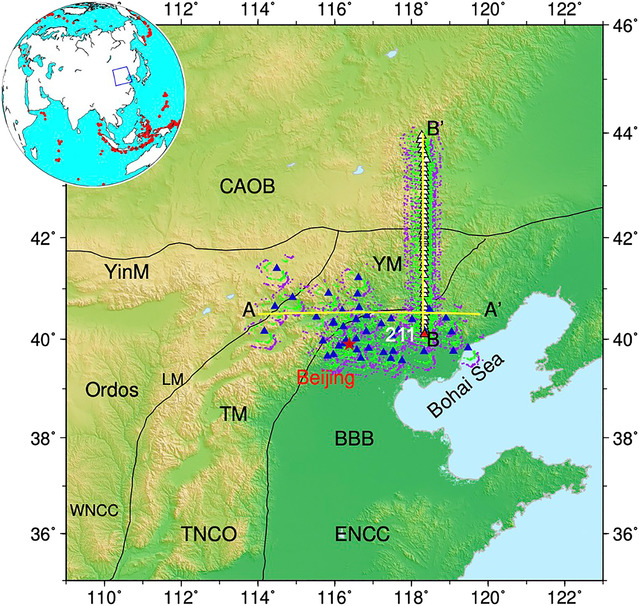作者:Jing Shi, Tao Wang, Ling Chen
刊物信息:Journal of Geophysical Research: Solid Earth (2020)
摘要:
Results of P wave receiver function (RF) analysis (e.g., H‐κ stacking, common conversion point (CCP) stacking, and migration) depend on the velocity models employed. Converted phases of crustal and upper mantle discontinuities are often interfered by multiple reflections from shallower structures, adding further complexity to the interpretation of P wave RF images. In this study, we propose a receiver function velocity analysis technique (RFVAT) that can constrain the velocity structure above discontinuities and remove multiple reflections arising from target discontinuities. By scanning the amplitude spectra of the Ps and PpPs phases, we can obtain precise arrival times of these phases for interfaces above 250 km (errors < 0.13 s) and derive the average velocities and thicknesses of the layers between interfaces in the crust and upper mantle. Synthetic experiments are used to demonstrate that crustal and upper mantle discontinuities can be coherently identified and that multiple reflections can be effectively removed in the CCP stacking images of P wave RFs using the RFVAT even with low signal‐to‐noise ratio data. By applying the proposed RFVAT to real P wave RF data from the northeastern part of the North China Craton, we achieve an improvement in CCP stacking image of lithospheric discontinuities, especially for the lithosphere‐asthenosphere boundary (LAB). Our P wave RF images reveal distinct lateral variations of the LAB depth. The lithospheric thickness extends to ~120 km beneath the central orogenic belt and decreases sharply to ~80 km at the west edge of the eastern block, consistent with previous S wave RF studies.
